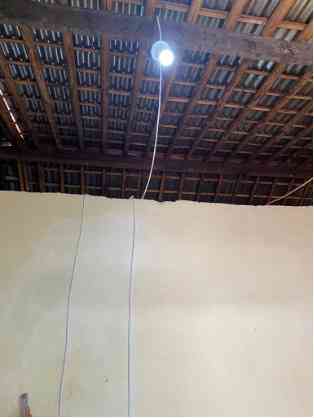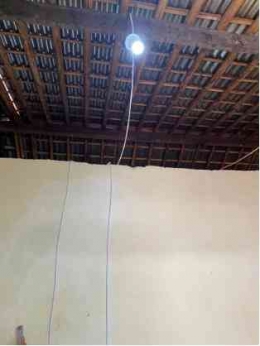In modern society, having reliable and affordable electricity access is essential, access to energy is a human right just like education and health access. Access to electricity is necessary in abundance for all types of modern conveniences, from light bulbs to any other home appliances; that includes every economic activity also reliant on electricity. Unfortunately, not all the people in our society, particularly in certain areas of Indonesia, can afford this access.
According to the 2018 IEA World Energy Outlook, there are currently 1 billion people in the world, or approximately 13% of the total population, with no access to electricity, mostly in Africa and South Asia. In sub-Saharan Africa, it is estimated that approximately 600 million people, or around 57% of the population, live without electricity, against the 350 million people, who represent 9% of the population, who lack access in developing Asian nations. In Indonesia, the BPS (Statistics Indonesia) shows that around hundred thousand of people in the village remain without electricity, which can be defined as living in energy poverty.
What is energy poverty?
According to the World Economic Forum, energy poverty can be defined as the lack of access to sustainable modern energy services. To be more precise, it is not only a matter of sustainability: energy poverty can be found in all conditions where there is a lack of adequate, affordable, reliable, quality, safe and environmentally friendly energy services to support their everyday needs. While the World Energy Outlook (WEO) assesses two indicators of energy poverty at the household level which are the lack of access to electricity and the reliance on the traditional energy such as traditional biomass fuels for cooking.
What does energy poverty look like in Indonesia?
Talk about poverty itself, ADB mentions that in Indonesia 10,1% of the population lived below the national poverty line in 2021, there is a link between geographic features (such as mountainside, forest, coastal areas) and energy access in this archipelagic nations. Previous study shows that energy poverty in Eastern part of Indonesia is larger than in the west. Households located in the isolated area was the dominant factor to influence prevalence of energy poverty among geographic constraints.
Poor energy access in the west is totally different with in the east, which is mostly caused by socio-cultural aspects which are hindering distribution electricity access, for instance where the local culture is so strong that they rejected government’s offer on funding and prefers to live without electricity, that is still exist in this modern society. In addition, economic aspect also consider in hindering 100% electrification ratio. In term of economics constrain, it also happened in urban areas where several households live still remains without electricity, not because lack of electricity infrastructure but they are typically of low income households so they need financial support to install electricity panel to connect the grid. Some households also get electricity supply from their neighbour which is consider illegal. That is why connecting them legally to the electricity grid is necessary.
How to tackle energy poverty in Indonesia?
Expanding access to modern energy services at the household level that include providing the reliability and affordability of the electricity supply to households is crucial, which is one aspect of overcoming energy poverty. Indonesian government has the target to light-on the areas which is lacking to electricity access to achieve 100% of electrification ratio, as the ratio between the number of households within the electricity grid-connected area and the total number of homes. In addition, ASEAN Center for Energy mentioned that in order to achieve electrification ratio several parameters need to take into consideration such as capacity, duration, reliability, quality, affordability, legality, and health and safety.
Indonesian government has set several strategies to achieve one hundred percent electrification ratio, those are:
- Grid extension, for the villages that are close to the existing grid. Grid Extension is the best choices for electrifying those area which remain without electricity and replacing LTSHE or electrifying villages with non-PLN electricity.
- Developing mini grid, this will be done through the construction of power generators by utilizing renewable energy potential in those areas that are difficult to reach by the expansion of the PLN electricity network and for the people who live in groups (communal), for example for small Islands or remote areas. In addition, development solar/micro hydro power plants in 3T areas (frontier, outermost, disadvantaged), and Rp500.45 billion for installation of 31,072 units of solar energy-based street lighting system.
- Developing Renewable Energy Power Generations and equipped with SPEL (Electricity Charging Station from solar panel) & APDAL (Mini Energy Storage), to electrify villages that do not yet have electricity access where the people live scattered so that developing an electricity network is not possible (consider high-cost investment).
- Government funding (APBN) through BPBL Program, this program is designed to support low-income households to connect with the low-voltage PLN Distribution Network.
The implementation of New Electricity Connection Assistance Program (BPBL)
In 2022, the government has implemented the new installation of low voltage power supply with the capacity of 450 VA, for about 80,183 under privilege households which are un-electrified. This program is also following up on Presidential Instruction Number 4 of 2022 for the acceleration of the extreme poverty reduction by supporting them to connect with the existing PLN electricity grid and becoming PLN Customers. The government under the Ministry of Energy and Mineral resources has issued MEMR regulation Number 3 of 2022 concerning about the implement of New Electricity Connection Assistance Program for the households that cannot afford to pay new electricity connection and installation. There are several requirements for the program beneficiaries, that already mentioned on this regulation, those are:
- The candidates are not registered yet as a customer of PT. PLN (state owned utility company)
- Live in the area that has a low voltage power supply of PT PLN (Persero) with no network expansion or extension needed
- Candidate has been registered in the Integrated Social Welfare Data (DTKS) this data has been published by the Ministry of Social Affairs
- These underprivilege households will be prioritized, if they are in 3T’s Areas (Frontier, Outermost and Least Developed)
- The implementation based on proposal from the Village Head regarding the recipients (by Name and address based on Indonesian Identity Card). The recipients have also been validated by the local authority.
To make the program sustainable, according to Article 13 MEMR Regulation Number 3 of 2022, the government states that the program recipients have the responsibility to maintain their electricity installation and not allow them to change and/or transfer it to another party. So, what do the recipients get from this program? According to Article 10 of this regulation, the government will provide all components for the residential electrical installation that consist of one set of distribution board panels, including one incoming supply circuit breaker with a minimum capacity of 10 Ampere or main switch, three 10 W LED bulbs with the socket, two pieces of electric plug (single and double switch), one socket outlet, an earthing system, a set of cable, and other wiring accessories.
The electrical installation will be done by a qualified electrician from the registered electricity companies, and after they finish the installation and connect to the PLN’s grid, the owner will receive an operating certificate. The entire service is free, and the government covers the entire cost of lighting those families, so they are no longer in the dark or relying on their neighbors.
Most of the recipients of this program really appreciated and expressed their gratitude for the free electricity installation assistance, they said that they did not have any money and could not afford it. Another beneficiary of the BPBL program, said that relying on their neighbor or relatives can sometimes lead to conflict. That is why, having their own electrical installation allows families to avoid problems, including legal problems. The BPBL program is expected to raise the community's standard of living and level of independence, as well as overcome Indonesia's poor energy issues.











